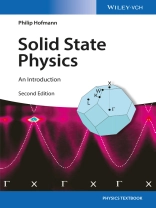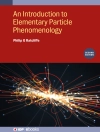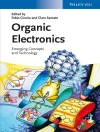Eine klar strukturierte und prägnante Einführung in das Thema. Neben allen grundlegenden Phänomenen und Konzepten werden auch schwierigere Themen wie Magnetismus und Supraleitfähigkeit behandelt. Setzt nur Grundlagenwissen in Mathematik voraus.
Table of Content
Preface
CRYSTAL STRUCTURES
General Description of Crystal Structures
Some Important Crystal Structures
Crystal Structure Determination
Further Reading
Discussion and Problems
BONDING IN SOLIDS
Attractive and Repulsive Forces
Ionic Bonding
Covalent Bonding
Metallic Bonding
Hdrogen Bonding
van der Waals Bonding
Further Reading
Discussion and Problems
MECHANICAL PROPERTIES
Elastic Deformation
Plastic Deformation
Fracture
Further Reading
Discussion and Problems
THERMAL PROPERTIES OF THE LATTICE
Lattice Vibrations
Heat Capacity of the Lattice
Thermal Conductivity
Thermal Expansion
Allotropic Phase Transitions and Melting
Further Reading
Discussion and Problems
ELECTRONIC PROPERTIES OF METALS: CLASSICAL APPROACH
Basic Assumptions of the Drude Model
Results from the Drude Model
Shortcomings of the Drude Model
Further Reading
Discussion and Problems
ELECTRONIC PROPERTIES OF SOLIDS: QUANTUM MECHANICAL APPROACH
The Idea of Energy Bands
Free Electron Model
The General Form of the Electronic States
Nearly Free Electron Model
Tight-Binding Model
Energy Bands in Real Solids
Transport Properties
Brief Review of Some Key Ideas
Further Reading
Discussion and Problems
SEMICONDUCTORS
Intrinsic Semiconductors
Doped Semiconductors
Conductivity and Semiconductors
Semiconductor Devices
Further Reading
Discussion and Problems
MAGNETISM
Macroscopic Description
Quantum Mechaical Description of Magnetism
Paramagnetism and Diamagnetism in Atoms
Weak Magnetism in Solids
Magnetic Ordering
Further Reading
Discussion and Problems
DIELECTRICS
Macroscopic Description
Microscopic Polarization
The Local Field
Frequency Dependence of the Dielectric Constant
Other Effects
Further Reading
Discussion and Problems
SUPERCONDUCTIVITY
Basic Experimental Facts
Some Theoretical Aspects
Experimental Detection of the Gap
Coherence of the Superconducting State
Type I and Type II Superconductors
High-Temperature Superconductivity
Concluding Remarks
Further Reading
Discusson and Problems
FINITE SOLIDS AND NANOSTRUCTURES
Quantum Confinement
Surfaces and Interfaces
Magnetism on the Nanoscale
Further Reading
Discussion and Problems
APPENDIX
Explicit Forms of Vector Operations
Differential Form of the Maxwell Equations
Maxwell Equations in Matter
Index
About the author
Philip Hofmann studied physics at the Free University, Berlin and did his Ph D research at the Fritz-Haber-Institute of the Max Planck Society, also in Berlin. He stayed at the Oak Ridge National Laboratory, USA, as a Feodor Lynen Fellow of the Alexander von Humboldt Foundation. In 1998, he moved to the University of Aarhus, Denmark, where he is associated with the Synchrotron Radiation Source and the Interdisciplinary Nanoscience Center (i NANO). His research is primarily focused on the electronic structure of solids and their surfaces.












